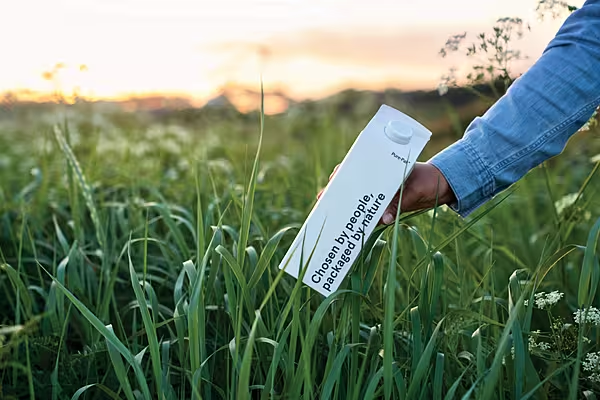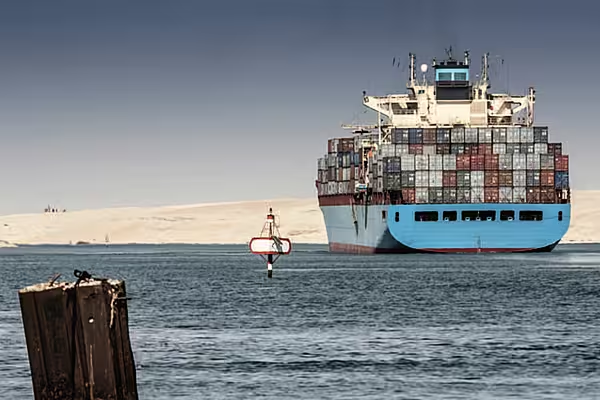In the ground floor lobby of Ireland’s Agriculture Department in Dublin, a flat-screen TV displays a digital clock counting down the seconds until April 1.
That’s when the European Union removes production caps that limited dairy expansion across the continent for three decades. Call it 'milk freedom day'. Ireland has been gearing up for it since 2010. Companies, farmers and the government have spent hundreds of millions of euros on more processing plants, equipment and cows in a bid to become the world’s fastest- growing dairy producer.
Even though a global milk surplus has left dairy prices near a five-year low, farmers on the Emerald Isle are still pushing ahead with expansion plans because they’re low-cost producers, exploiting a rainy climate and a grassy countryside ideal for grazing.
Boosting output will allow the country, still recovering from its worst recession on record, to add 10,000 jobs in the next five years, including as many as 4,000 on farms, the government estimates.
“This is a big deal for Ireland,” Agriculture Minister Simon Coveney said during an interview March 12 in Dublin. “A lot of our farmers have the capacity to increase milk production significantly.”
Selling Overseas
For now, an expanding Irish milk industry is unlikely to have much impact on global supplies. Coveney estimates that the country’s annual output will surge 50 percent in the decade through 2020 to about 7.5 billion liters. That’s about what cows in the U.S., the world’s top dairy producer, yield in a month and less than the state of Wisconsin last year.
But that won’t take away from the sense of anticipation on Irish farms. While countries including Germany, France and the U.K. are bigger producers in Europe, Ireland may have the most to gain from lifting quotas. It exports 90 percent of its supply, and virtually all the extra milk will be sold overseas.
Ireland’s dairy cow herd has increased 6.4 percent in the past two years, the fastest gain in the 28-country bloc, Eurostat data show. Ending quotas will unleash supplies that farmers withheld to avoid EU fines, with some milking cows just once a day instead of twice, or not at all, said Sean O’Leary, the chairman of the Irish Farmers Association’s dairy committee.
More Efficient
Plus, farmers are now freer to use new technologies that boost milk yields, from better cow breeding to more efficient grassland management, said Mark Faherty, an economist at the Irish Dairy Board, a cooperative that makes Kerrygold butter and is the country’s largest dairy exporter.
“As of April 1, we’re going to start registering very rapid growth,” Faherty said in an interview in Dublin. “Quotas have been an imposition almost from the start. But there have been so many gains in agriculture productivity since then.”
The EU sought to stabilize milk prices in 1984 with quotas after government purchases of surpluses intended to aid farmers instead led to overproduction. The bloc began phasing out quotas in 2009, raising production limits by about 1 percent annually until this season, when caps were held steady before their removal in the marketing year that starts April 1.
Exploiting Change
Even with global dairy prices down 34 percent from a record in February 2014, the average since 2010 is about 60 percent higher than in the previous decade as rising incomes boosted demand, United Nations data show. Futures of benchmark Class III milk, a type used in cheese making, were down 4 percent this year to $15.28 per 100 pounds on the Chicago Mercantile Exchange as of 3:43 p.m. Seoul time on Thursday.
Ireland may be one of the few countries to exploit the quota change. The European Commission estimates production across the EU will rise by 1 percent this year to 162.4 million metric tons. Many EU countries, especially in southern areas, already produce less than their allotment and are unlikely to ramp up, said Kevin Bellamy, a senior dairy analyst at Rabobank International.
The Netherlands, France, Belgium, Denmark, the U.K. and Germany will see some increases, though none as fast as Ireland, he said. Cows tend to be smaller and hardier in Ireland than the larger Holstein breeds in northern Europe, where animals spend more time indoors eating grain or soybean meal.
Cheap Producer
Ireland is “one of the cheapest places to produce milk in Europe because of their grass and because they keep their cows outdoors for longer,” Bellamy said by telephone from Utrecht, Netherlands. “If you want to be reincarnated, come back as a Dutch cow, because they live in luxury accommodations and centrally heated palaces.”
Lower costs will come in handy, with average EU milk prices 21 percent lower in January compared with 2014, according to the Dutch Federation of Agriculture & Horticulture. Rising supply comes as demand growth slows in China, the world’s top importer of milk powders. Russia, the biggest buyer of butter and cheese, banned purchases from the EU in response to sanctions over its intervention in Ukraine.
EU farmers are receiving 33 euro cents a kilogram on average for milk, about break-even for many producers in continental Europe, Faherty said. Irish farmers can be profitable at 28 cents, he said.
Getting Ready
The country is expanding with an eye to New Zealand, the world’s biggest milk powder exporter. The two island countries have similarly cool, rainy climates conducive to grass. Before EU quotas were imposed, Ireland and New Zealand produced a similar amount of milk, said Coveney, the agriculture minister.
Companies are getting prepared. Glanbia Plc is spending 235 million euros ($253 million) on expansion projects including a facility in Belview that opened this month to produce milk powder for export. The Irish Dairy Board has invested 200 million euros, including starting this year to build a plant in County Cork, Faherty said. Dairygold is spending 117 million euros to expand processing plants in Mallow and Mitchelstown.
Farmers will be ready to supply those processors extra milk after quotas end, said O’Leary, who expanded his own herd near Mourne Abbey in County Cork this year to 120 cows from 80 about two years ago.
“The EU had a situation where anyone in this business couldn’t actually grow their business,” said O’Leary, who expects to produce about 60 percent more milk this year after selling off his beef herd to buy more dairy cows. “We’re going beyond that now. Farmers are optimistic about the future.”
Bloomberg News, edited by ESM














